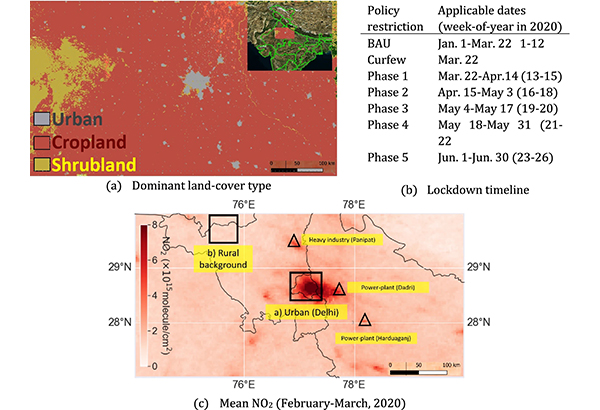Separating natural and man-made pollutants in the air: Japanese researchers show the major drop in atmospheric nitrogen oxide levels in 2020 in India was the result of the COVID-19 lockdown
18 June, 2021
Research Institute for Humanity and Nature
JAMSTEC
Tohoku University
Kobe University
Institute of Industrial Science, The University of Tokyo
Atmosphere and Ocean Research Institute, The University of Tokyo
Nara Women’s University

COVID-19 has changed the world in unimaginable ways. Some have even been positive, with new vaccines developed in record time. Even the extraordinary lockdowns, which have had severe effects on movement and commerce, have had beneficial effects on the environment and therefore, ironically, on health. Studies from all around the world, including China, Europe and India, have found major drops in the level of air pollution. However, to fully understand the impact of anthropogenic causes, it is important to separate them from natural events in the atmosphere like wind flow.
To demonstrate this point, a new study by researchers at the Research Institute for Humanity and Nature, Japan, uses satellite data and mathematical modeling to explain just how great the lockdown effect on nitrogen oxides has been in Delhi, India, one of the world’s most polluted cities, and its surrounding area. This study was carried out under the activity named “Mission DELHIS (Detection of Emission Change of air pollutants: Human Impact Studies)” as a part of RIHN project, Aakash (meaning "Sky" in Hindi, originated from sanskrit).
https://www.chikyu.ac.jp/rihn_e/events/2021/0618.html
(Research Institute for Humanity and Nature)
![]()



